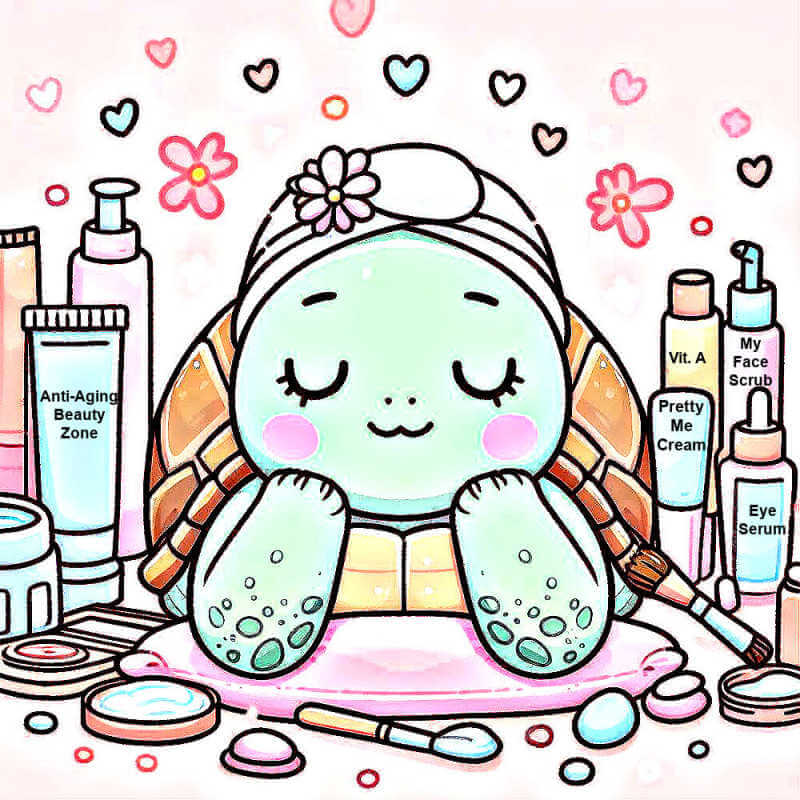I may earn from qualified Amazon & Affiliate purchases at no cost to you.
How Soon Can You Get Botox Again
by: Linda Robison / Facial Fitness Specialist @ ABZ
How soon can you get Botox touch-up again to keep your skin smooth and wrinkle-free? Timing is everything to keep that fresh, youthful glow without going overboard.

If you're loving your Botox results but unsure when to schedule your next appointment, this ABZ guide has you covered! Whether you’re new to cosmetic injections or a regular, knowing the right timing helps you get the best results and save money.
We'll explore Botox maintenance tips, the ideal schedule for injections, and what factors affect how often you need touch-ups.
Botox 101: A brief overview
While many are familiar with anti-wrinkle injections such as Botox, let's quickly go over the basics you may not be aware of.
Botox, short for botulinum toxin, is like the magician of non-surgical cosmetic procedures. Sourced from Clostridium botulinum, it works by temporarily paralyzing specific areas, preventing the formation of those pesky expression lines.
In simpler terms, it's an effective weapon against dynamic wrinkles and soften the appearance of the aging process.
How often should you return for your treatment?
Now, the common question: how often should you schedule your injectable treatments?
The general consensus is every 3-4 months because that's roughly how long the effect of botulinum toxin injections lasts.
But it's not always a one-size-fits-all answer.
How often you need follow-up treatment depends on several factors like:
- your age
- the amount of wrinkles you're dealing with
- your anti-aging goal
- the number of units used
- the injection sites
I know, it might feel like a bit of a bother initially. However, in the grand scheme of things, figuring out your own touch-up routine pays off big time for the best results.
In fact, a study published in the journal Dermatologic Surgery found that personalized dosing schedules based on individual patient response can be more effective than a fixed schedule.
Younger individuals - preventative:
If you're in your late 20s or early 30s and using injections preventatively, then every 12 weeks might do the trick.
Why?
Young people using botulinum toxin injections for prevention may require more frequent treatments because muscular contractions of younger individuals tend to be more active and dynamic, requiring more frequent touch-ups for best results.
Remember, the goal for prevention is to maintain a consistent, smooth appearance by preventing the development of lines. And, as always, this is just a basic guild line as individual needs and preferences play a role.
Older individuals or deeper wrinkles:
On the flip side, if you're older and dealing with the appearance of deeper wrinkles, a sweet spot could be somewhere between 12-16 weeks.
Why?
For those with existing deep wrinkles, Botox is often used to manage and soften existing lines rather than proactively preventing new ones.
So, fewer or less frequent injections, at roughly 16-week intervals, strike a balance between maintaining results and avoiding an overly frequent treatment regimen.
Other factors that determine how soon you can get Botox again
Factors Influencing Scheduling and Frequency
Some additional factors may determine how often you'll need Botox touch ups. They include the following:
Injection Site (treatment area)
Different parts of your face move at different rates, and that makes a big difference when you're talking about injection frequency.
For example, the facial muscles around your eyes and brows are smaller and more expressive and may require more frequent touch-ups because those muscles are always on the move.
However, the muscles in your forehead may not be as active and might not require injections as frequently to achieve the desired effects.
Units of Botox
Think of units as your dosage. The more units injected, the stronger the effect. So, if you go heavy on the units, it might last longer, and you won't need touch-ups as frequently.
The same with lower units, the effects might wear off sooner, meaning more frequent touch-ups to keep that wrinkle-free look.
So, you're probably thinking, why not get more units right up front so you can eliminate frequent touch-ups? Right?
Well, not everyone wants that "frozen" look. This is especially true for older people. Also, some people prefer lower units (small doses) for a more natural look. This is sometime called Baby Botox.
Just keep in mind, as much as we all love Botox, used in correctly, it can have an aging effect.
It's best to discuss this with your professional injector to decide what is best for you.
First-Timer
If it's your first time getting injections, you might need a follow-up sooner, especially if some adjustments are needed to fully ease strong muscle contractions.
Experienced
On the other hand, those who've had treatments before might be able to extend the time between sessions and still keep their results.
My experience: The first time I got injections for the frown lines, I needed four treatments that year to maintain my desired results. My face is very expressive, and those frown muscles were strong.🫤
However, after that initial year of treatment, I only required two injections per year to keep things looking the same.
Botox touch-up: Most important factor

Try to establish a regular maintenance routine. Regardless of your experience, age, and goals with anti-wrinkle injections, staying consistent with regular touch-ups is crucial.
Wrinkle treatments deliver better, longer lasting results when you maintain a consistent schedule.
Why? Because if you wait too long between treatments, the muscles in the treated areas can become stronger, making it tough for Botox to do its job. Your usual dose might not work as well, creating a resistance.
So, timing matters to keep your muscles in check and the appearance of wrinkles in the background.
Side effects and myths about Botox
A common myth about the "magic of Botox" is that it freezes your face. But the truth is it's more about relaxing muscles. It works by inhibiting muscle contractions, and prevents the deepening of existing wrinkles and the formation of new ones.
The result? A more relaxed, youthful appearance.
Possible Side Effects
Before you embark on your Botox journey, it's wise to be aware of potential side effects.
While the majority of individuals experience no more than a slight pinch during injections, some may encounter minor bruising or swelling at the injection site.
These effects are temporary. But, if you're concerned, consult with your cosmetic injections to ensure your safety and satisfaction.
Side note: I always get a slight headache and a little swelling.
What to do: An ice pack and low dose of non-aspirin pain reliever does the trick.😊
Final Takeaway: So, how soon can you get Botox again?
Whether you're trying to prevent early signs of aging or soften existing lines, establishing a touch-up routine, is important for best results.
Mastering the art of Botox timing: The answer lies in the art of balance – a delicate dance between regular treatments and embracing the unique rhythm of your facial expressions.
Consider the individual needs of your facial expressions. Do you have more animated facial movements, or are you more of a poker face enthusiast? The frequency of Botox is like a customized treatment plan tailored to your unique muscle movements and aesthetic goals.
Now that you're armed with the knowledge, go ahead and make the right choice for your timeless beauty journey. Your future self will thank you.
About the Author:
Linda Robison is a Facial Fitness Specialist and the founder of Anti-Aging Beauty Zone. She shares expert insights on skincare, facial rejuvenation, and beauty treatments—blending traditional wisdom, personal experience, and science-backed research for both at-home and in-office solutions.
Before you go ....
Please tap on the💙in the bottom right corner if you found this page helpful. Also, Let’s CONNECT! Click the buttons below to follow me on social media.
Thanks so much!




